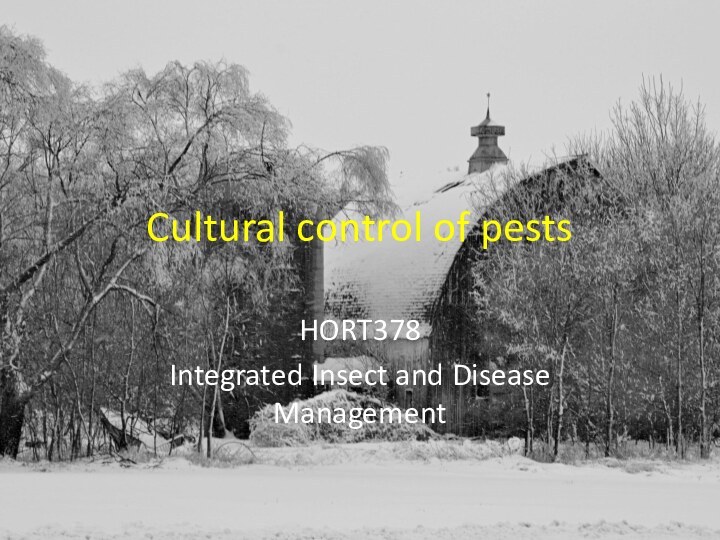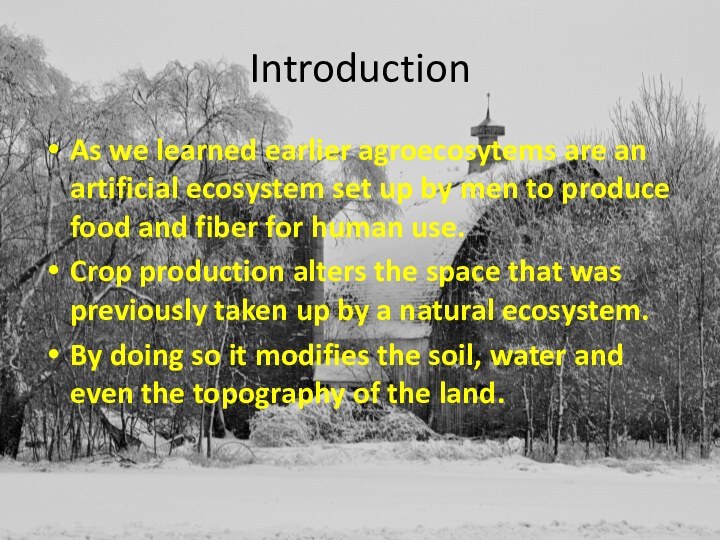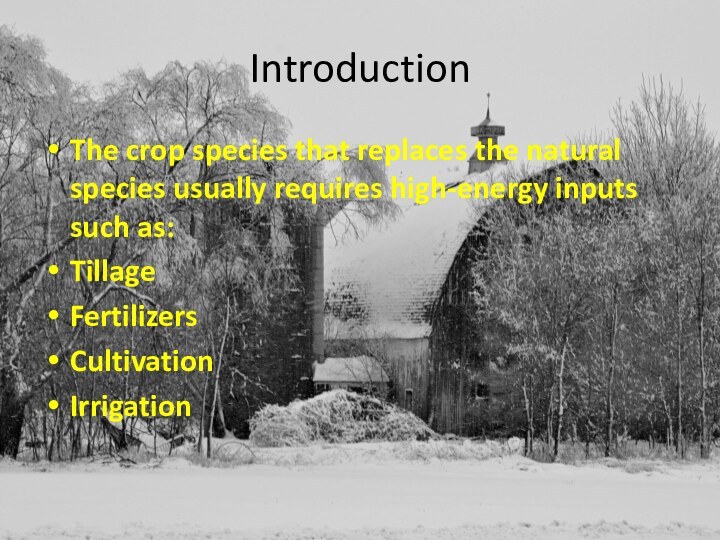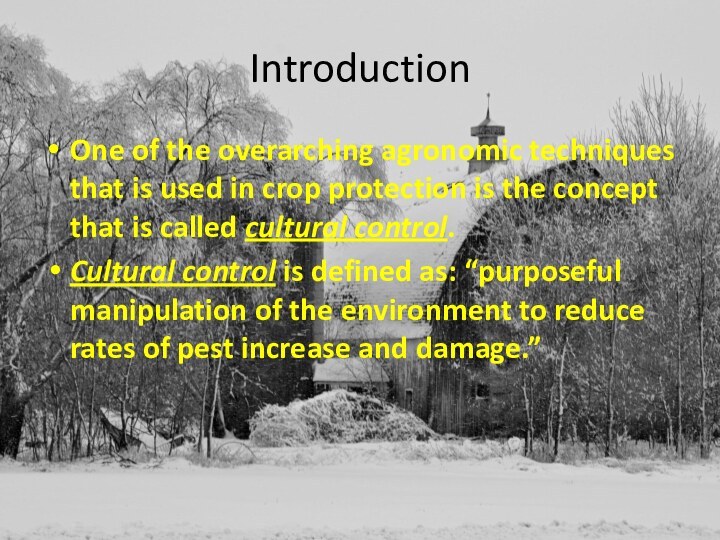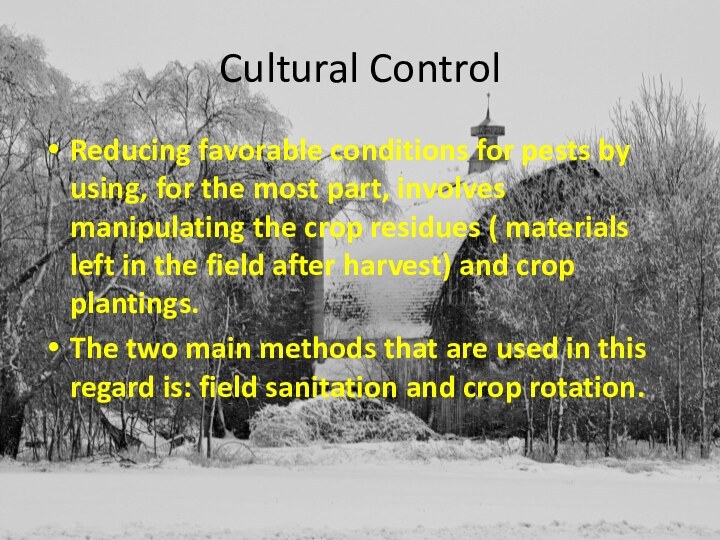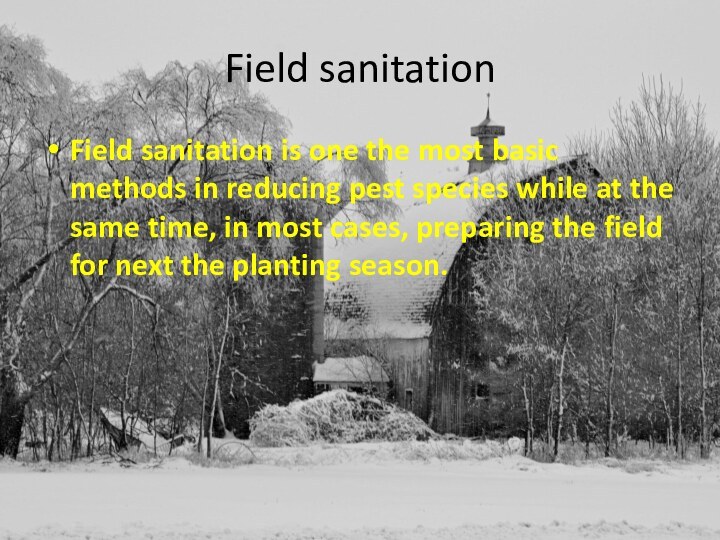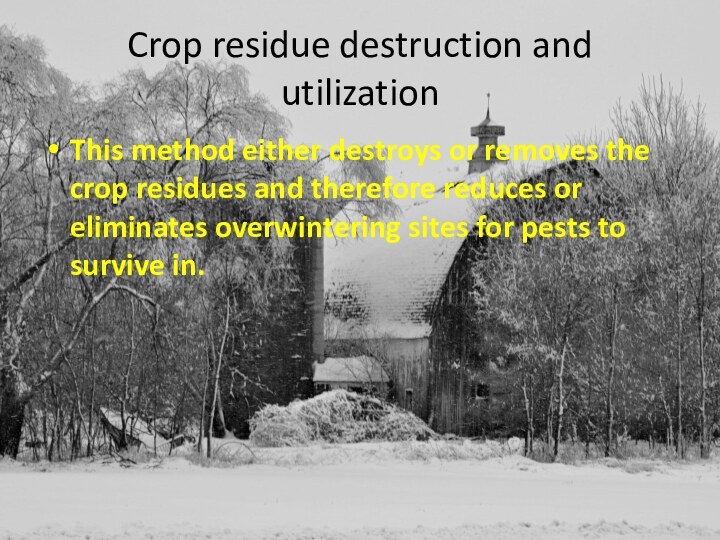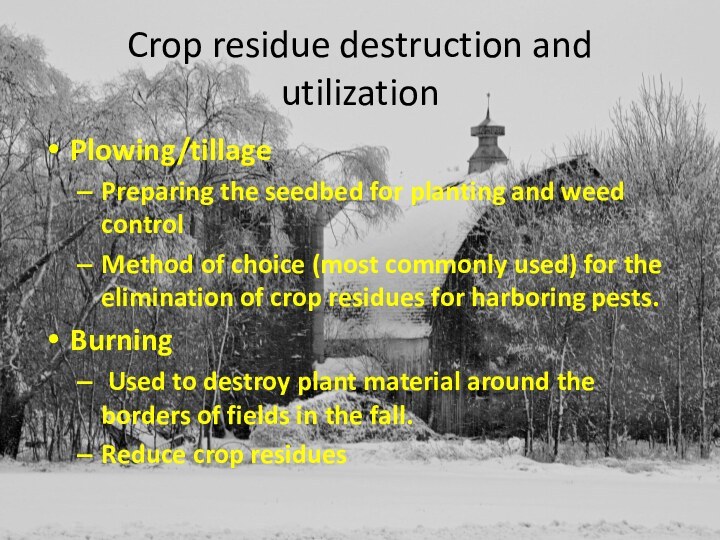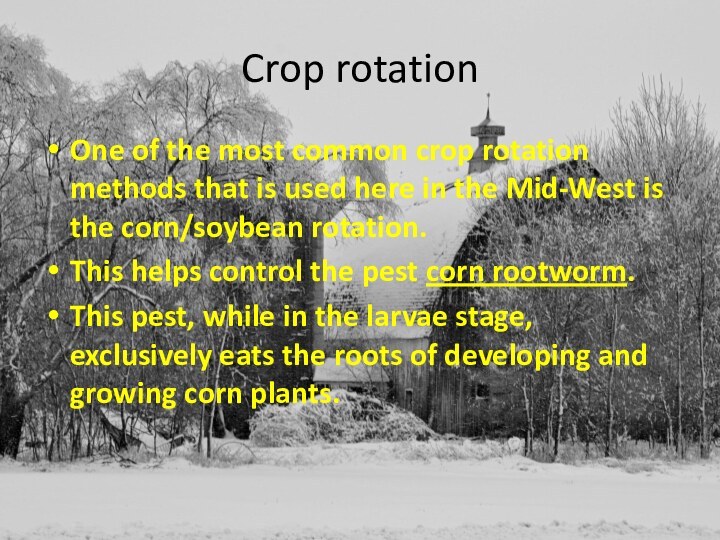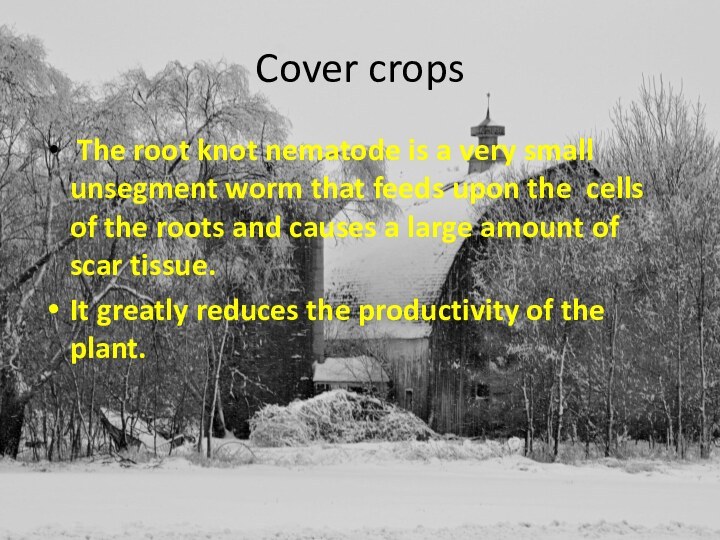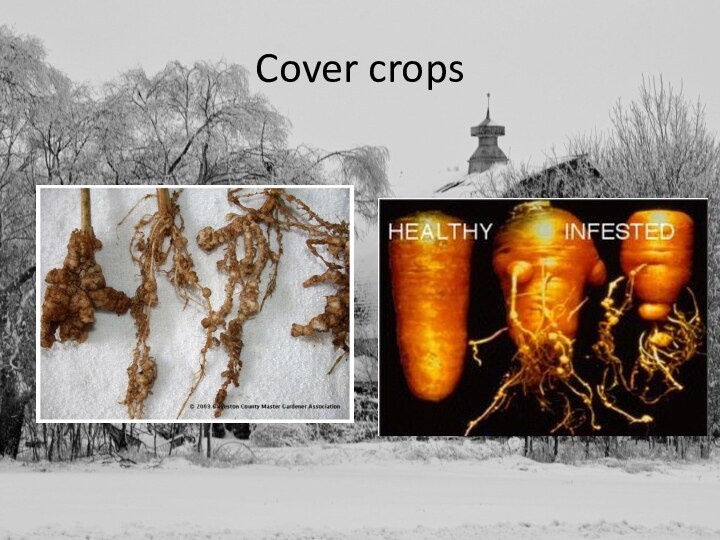Слайд 2
Introduction
As we learned earlier agroecosytems are an artificial
ecosystem set up by men to produce food and
fiber for human use.
Crop production alters the space that was previously taken up by a natural ecosystem.
By doing so it modifies the soil, water and even the topography of the land.
Слайд 3
Introduction
The crop species that replaces the natural species
usually requires high-energy inputs such as:
Tillage
Fertilizers
Cultivation
Irrigation
Слайд 4
Introduction
These introduced agricultural practices are designed to create
a favorable environment for the desired crop species.
While setting
up these favorable environmental conditions for a crop man is also setting up conditions for pests to invade the crop.
Слайд 5
Introduction
One of the overarching agronomic techniques that is
used in crop protection is the concept that is
called cultural control.
Cultural control is defined as: “purposeful manipulation of the environment to reduce rates of pest increase and damage.”
Слайд 6
Cultural Control
Reducing favorable conditions for pests by using,
for the most part, involves manipulating the crop residues
( materials left in the field after harvest) and crop plantings.
The two main methods that are used in this regard is: field sanitation and crop rotation.
Слайд 7
Field sanitation
Field sanitation is one the most basic
methods in reducing pest species while at the same
time, in most cases, preparing the field for next the planting season.
Слайд 8
Crop residue destruction and utilization
This method either destroys
or removes the crop residues and therefore reduces or
eliminates overwintering sites for pests to survive in.
Слайд 9
Crop residue destruction and utilization
Plowing/tillage
Preparing the seedbed for
planting and weed control
Method of choice (most commonly used)
for the elimination of crop residues for harboring pests.
Burning
Used to destroy plant material around the borders of fields in the fall.
Reduce crop residues
Слайд 10
Crop residue destruction and utilization
Shredding/chopping
Reduces crop residues to
smaller pieces so insect pests cannot get established in
them
Destroys pest that may already be in the crop residues
Weed removal or destruction
Around greenhouses and grain storage bins
Слайд 11
Crop rotation
It is a technique that controls pests
in one crop while it is not a pest
in another.
The practice of crop rotation came about as a method to improve soil workability and fertility.
It is the practice of planting two or more crops in some sort of sequence in the same field that changes from year to year.
Слайд 12
Crop rotation
One of the most common crop rotation
methods that is used here in the Mid-West is
the corn/soybean rotation.
This helps control the pest corn rootworm.
This pest, while in the larvae stage, exclusively eats the roots of developing and growing corn plants.
Слайд 13
Crop rotation
With a 2 –year crop rotation schedule
of corn followed by soybean it has virtually eliminated
the corn root worm problem.
When soybeans are planted the corn rootworm cannot survive, because its food source has been removed.
Слайд 14
Cover crops
A cover crop is a plant that
is seeded to cover the ground from one season
to the next.
It protects the soil from erosion.
Source of organic material for the next cropping season when worked into soil.
Controls the growth of winter weeds on the soil.
Слайд 15
Cover crop
Some cover crops acts as bio-fumigants.
When the
cover crop is incorporated into the soil and it
breaks down it may gives off substances that controls the germination of weed seeds
In some cases controls a pest called root knot nematodes.
Слайд 16
Cover crops
The root knot nematode is a
very small unsegment worm that feeds upon the cells
of the roots and causes a large amount of scar tissue.
It greatly reduces the productivity of the plant.
